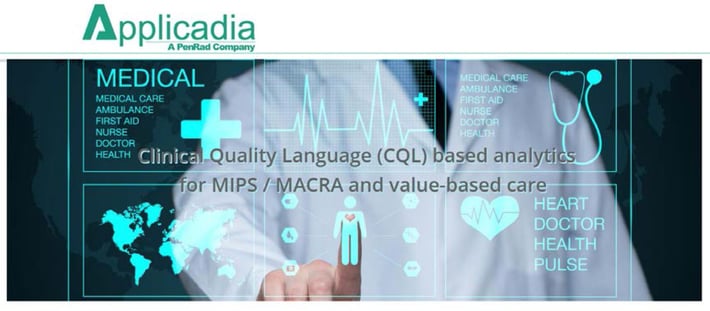
How Applicadia Leverages FHIR, CQL and CIMI
The medical software industry often exhibits great reluctance in adopting new approaches and technology. HL7 Fast Healthcare Interoperability Resources (FHIR®), which has been enthusiastically embraced, is an exception. FHIR is in the limelight and is being adopted at an unprecedented rate. However, FHIR also has two other sister-standards that aren’t getting the attention they deserve: Clinical Quality Language (CQL) and the Clinical Information Modeling Initiative (CIMI). When combined with FHIR, CQL and CIMI bring powerful and important capabilities to healthcare platforms that go far beyond what FHIR can deliver on its own.
Applicadia Wins Best in Show at HL7's March 2017 FHIR Applications Roundtable
Applicadia’s mission is to build a suite of tools, components and libraries, that facilitate the integration of FHIR, CQL and CIMI clinical models into existing healthcare platforms.
At the HL7 FHIR Application Roundtable event, Applicadia demonstrated a novel speech-based charting application that leverages Clinical Natural Lanugage Processing (NLP) and CIMI clinical models to capture structured information at the point-of-care, without ever having to touch a keyboard. As a clinician speaks, SNOMED CT and LOINC descriptors are built from his or her statements and used to determine which pre-defined schema (CIMI clinical model) best describes the clinical situation. The system can then prompt for additional information, as necessary, until a fully encoded and computable standards-compliant medical record is produced that conforms to the expectations of its matching FHIR profile.
You can watch the Applicadia demo from the March 2017 FHIR Applications Roundtable by clicking here.
What Are CIMI Clinical Models?
CIMI clinical models provide standardized semantics for describing, in great detail, exactly what clinical information must be captured to satisfy the interoperability and computability needs for the entire processing chain. One way to think of these clinical models is as profiles on steroids.
Clinical models have notably more sophisticated semantics, and are defined at a much higher degree of granularity than FHIR profiles. For example, a single FHIR profile could be used to store and query fracture observations, which might then be matched to a hierarchy of a hundred different detailed clinical models, which define what fields are applicable to each unique bone type. Describing a pelvic fracture is very different than for the collarbone, and CIMI provides a methodology to capture that information is a way that is machine sensible.
How Applicadia Leverages CIMI
Applicadia leverages the clinical schema to guide a clinician through the process of capturing all of the information that is needed through an interactive and speech-based application that runs over the web or on mobile devices. Because CIMI clinical models have open source authoring tools, the resulting clinical schema can be extended and evolved by nearly anyone who takes an interest. Imagine a world where clinicians and health systems staff could continually tune and improve the specificity of the medical records they were capturing, without waiting on expensive platform updates or relying on hand-coded capture screens. Everything could be changed simply through authorable metadata that could be changed in the field.
What Is Clinical Quality Language (CQL)?
HL7 CQL delivers standardized semantics to author and distribute clinical decision support (CDS)rules and clinical quality metrics (CQM) reports that can be implemented across multiple vendor platforms. CQL is to decision support and clinical reporting, what FHIR is to patient data.
How Applicadia Leverages CQL
All of the clinical behaviors within our platform are expressed through CQL logic. Behaviors for structuring the medical record correctly, such as putting family history entries in the Family History section, or for real-time ICD-10-CM coding with prompts for additional information, are all expressed in field-editable CQL syntax. Thus, when clinical teams wish to make the system smarter or more efficient, they will have the ability to evolve the system to suit their needs. Additionally, those investments in CQL-based logic are portable, so they can be used in any platform that supports clinical quality language.
Conclusion
Applicadia’s vision is for clinical teams (either research or providers) to have the freedom to use tools to author clinical decision support rules and CIMI clinical models in tandem. By leveraging sophisticated voice capturing and processing technology for the clinical narrative, the information needed to support the CDS rules chain can be captured at the point-of-care, which will have a positive impact on clinician productivity.



